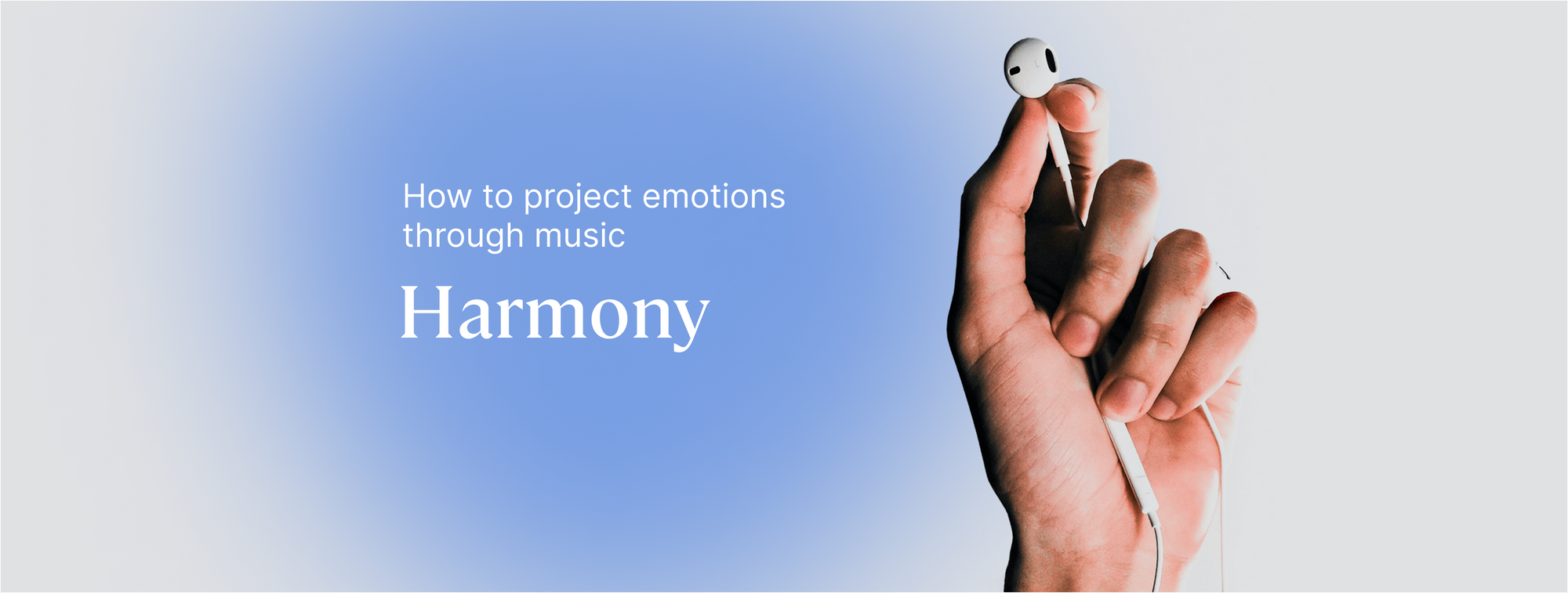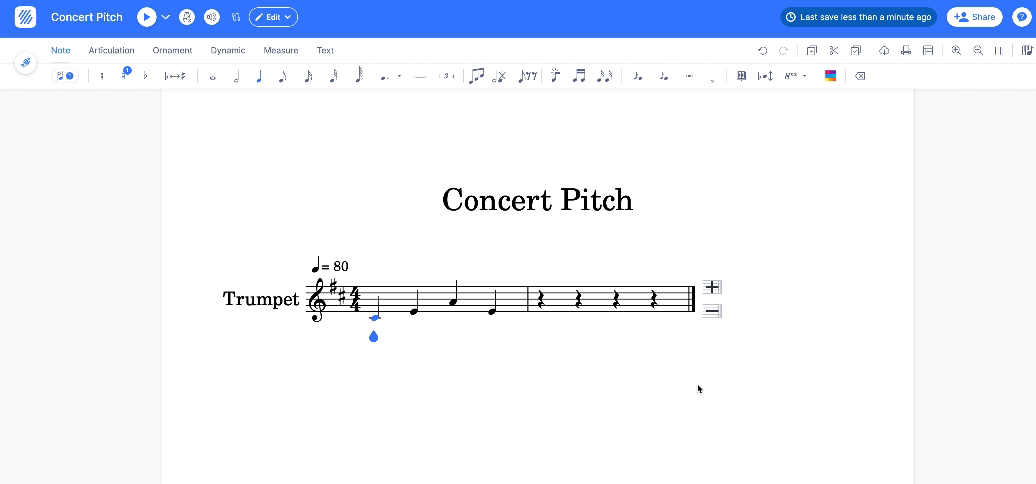Music composers find inspiration everywhere: in personal experiences, fleeting emotions, and even captivating stories that touch our hearts deeply. Transforming stories, like a famous fairy tale such as Cinderella, into music isn't a new concept, but it comes with its own set of challenges. Today, we're excited to share Will's story with you, a Flat user who has always shone for his talent. He uses Flat to transform narratives into stunning musical compositions. We hope his journey inspires you and provides valuable insights to help you confidently write sheet music, translating stories into songs, whether for pleasure or professionally.
✨ Will Strassberger, originally from Florida, resides in Jacksonville. He is employed by the Roman Catholic Diocese of St. Augustine. In his leisure time, Will composes original music and performs with the Jacksonville Symphony Chorus.
He is currently writing a symphony to memorialize the Martyrs of La Florida. He recently completed the first movement called Antonio. This pieces reflects a significant part of Florida's history, telling the moving story of these martyrs. This historical event is particularly important to the Catholic communities in Florida and Georgia.
🧐 A bit of context: In the 18th century, the Timucuan tribespeople, Spanish settlers, and clergy faced severe persecution from the British and Creek for refusing to abandon their Catholic faith. Inspired by their bravery and sacrifice, he wanted to preserve their story through music. Learn more about the Martyrs of La Florida and their profound legacy here.
So, let's explore how Will created such a beautiful and accurate composition using our music notation software.
Steps for turning a story into a song
Before you start composing, it's a good idea to take some time to prepare your creative workspace. Let’s look at what steps are recommended before you begin.
🔎 Research the story
The more you know about the story you want to transform into a song, the better equipped you'll be. Having detailed information allows for more creative choices and better decision-making during composition. Familiarize yourself with the people involved, the historical and social contexts, and other relevant details. This knowledge will provide a strong foundation to convey the story’s emotions effectively in your music.
You can gather information from various sources such as online research, consultations with experts, and listening to interviews on platforms like YouTube. For instance, Will benefited greatly from an expert who provided deeper insights about the Martyrs of La Florida.
Dr. Mary Soha is the vice-postulator for the Martyrs' cause for canonization. She is THE historical authority on their story and has been a tremendous help. For example, I was eager to write themes for each entity and she was prudent to teach me when and how they all interacted.
📍Narrow your scope
After completing your research, it’s a good idea to narrow your focus. Setting clear boundaries can streamline the composition process. Without limits, you might find the task overwhelming and face greater difficulties when writing your music score.
My advice for writing anything based on historical narratives is to greatly limit your scope. Get as specific as possible and you will find yourself with a unique story to tell. For example, it would have been very daunting to write a symphony for the entire colonization of the New World by the Europeans. There are so many counties, cultures, tribes, conflicts, etc. that I realistically could not have produced anything meaningful. But by focusing on the particulars of Spain's interactions with the Timucua tribe--and the spreading of Christianity and martyrdom of the faithful--I am able to enter into the lives of historical people, like Antonio, and relate to them. This allows an artist to create with a unique perspective.
🎨 Start exploring in Flat
Now is the time to engage in the creative process. Before setting any final instrumentation or musical decisions, I recommend opening a new score in Flat to experiment. Insert potential melodies, test different instruments, and use instant playback to assess the combinations. Explore various keys, and feel free to explore your initial thoughts. This stage should be a brainstorming session to let inspiration flow.
Additionally, consider using annotations or inline comments to write down appealing ideas you might have. This ensures you don’t forget those ideas once you sit down to compose the real thing.

Once you have established a musical idea or theme, don't be afraid to play around on Flat.io--point and click and see where the notes take you. I have started many scores with a strict plan in my head, but I surprise myself when I let the music take me on its own adventure.
🎶 Composing your song
Now, the time has come to begin composing! Where should you start? We’ve gathered some valuable insights from Will to help guide you. To start, you already have notes from your brainstorming session, but there's more to consider. Will suggests letting your ideas flow naturally to see what surfaces. In his experience, a specific motif emerged early in his project, which he then developed into the foundation for his entire composition.
The six-note theme which appears over and over again in Antonio was all I heard for a while... So after a few months I finally sat down at my laptop, opened Flat.io and just poured out all of my variations on that theme. Quite quickly it grew from a whisper on the flutes to an heroic call from the horns to a foreshadowing in a guitar choir.
When selecting instruments, making smart and deliberate choices is crucial to capturing the essence of the story. For example, Will chose flutes and guitars because classical guitars are symbolic of the Spanish, while flutes are native Timucuan instruments. Moreover, Antonio, the protagonist of the story, was a skilled musician who could play both the flute and the guitar proficiently.
💡 Remember, in Flat, we offer hundreds of instruments for you to explore, and you can even create custom instruments to meet your specific needs.

Last but not least, take a moment to consider the harmony before you begin crafting it. It’s crucial to pinpoint the emotions and story you aim to express through your music. Start by answering these key questions: What is the primary emotion driving my composition? What story or message do I want to convey? What emotional response do I hope to evoke from the audience? Reflecting on these questions will guide your choices and enhance the emotional depth of your work. Don't be afraid to use familiar chord progressions that you know work well, but also don’t hesitate to explore new ways to create interesting harmonies.
The main theme oscillates between A minor and F major, or i-VI-i. This is not a new chord progression and is often featured in heroic music. In Antonio, I wanted to immerse the listener in this oscillation, so it is not until about 4 minutes into the piece that a distinctly new chord progression develops--and it comes like a breath of fresh air.

The 3 key features in Flat to write sheet music inspired by amazing stories
Toggle Concert Pitch
This feature is particularly useful for full orchestra scores, especially when using instruments like clarinets or trumpets. If you are not highly experienced in composition, writing parts for these transposing instruments can be challenging due to their tuning. In Flat, you can easily toggle concert pitch with just one click. The term 'concert pitch' helps differentiate between the 'written' notes (nominal) and the 'sounding' notes (real) of a transposing instrument. When you open a score on Flat that includes a transposing instrument, we display the 'written' notes. To view the 'sounding' notes (in concert pitch), simply click on the Concert Pitch icon in the Note toolbar.

Suddenly the composer does not have to worry about clarinets, trumpets, horns, etc. being in a different key.
Copy/Paste features
For Will, having the ability to copy and paste is crucial. With this feature, you can select large sections of your score, or even the entire score, and easily copy and paste the content. While it may seem like a minor feature, it is incredibly valuable. Trust me, it will save you tons of time! This functionality enhances the editing and workflow, allowing for quick adjustments and easy replication of sections within your compositions.

Instant Playback
Every change you make, whether it's adding a new note or altering dynamics, can be instantly heard. This feature is really useful because it lets you experiment by changing the key or trying out different instruments and actually listen to those changes. It helps you get a good sense of what your final composition will sound like. This is essential for fine-tuning your piece to craft the exact composition you are envisioning.
Even if I am just thinking about a different configuration of sections, I am able to hear it in real time and make an informed decision instantly.

👋🏻 This is all for now. We hope you feel as inspired as we do! It's time for you to open up Flat and write sheet music!
See you next time,

